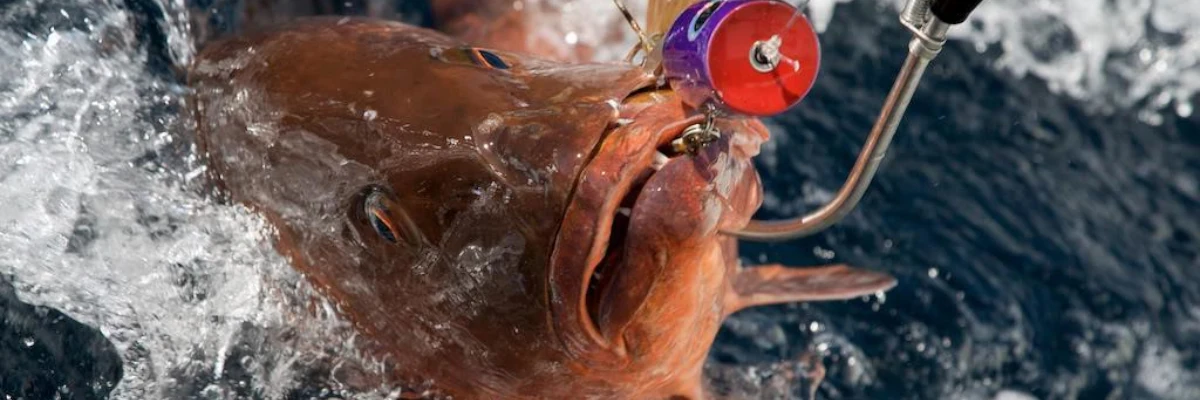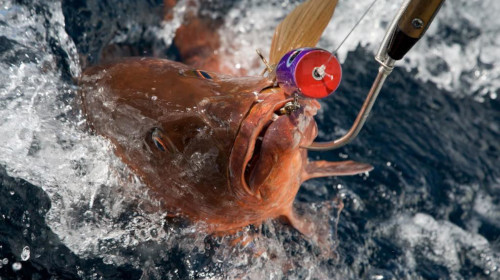Mastering Fighting & Landing Techniques
Posted by OTI on Jun 22nd 2023

Learn valuable fishing techniques to enhance your angling skills. Discover the importance of leverage, creating correct angles, and avoiding high-sticking your rod for shorter fight times and increased success in landing fish.
Fighting And Landing Techniques
At Ocean Tackle International, we are passionate about helping anglers improve their fishing skills and maximize their success on the water. In this blog post, we will delve into the art of fighting and landing techniques, focusing on the importance of leverage, creating correct angles, and avoiding the dreaded high-sticking of your rod. With these valuable insights and techniques, you'll be able to optimize your gear's capabilities, reduce fatigue, and ultimately increase your chances of landing that trophy fish.
Get the Leverage You Need
When it comes to using light tackle, leverage becomes your closest ally. Unlike heavier gear, which allows for brute force, light tackle requires finesse and strategic maneuvering. It may seem counterintuitive at first, but learning how to create and utilize leverage effectively will unlock the hidden capabilities of your gear, resulting in shorter fight times and less fatigue on the angler.
Imagine yourself in a battle with a powerful fish. Without the luxury of relying purely on strength, you must instead rely on the principle of leverage to gain the upper hand. By understanding how to position yourself and your equipment, you can maximize the force exerted on the fish while minimizing the strain on your body.
Create the Correct Angles
We want to emphasize the significance of keeping the butt section of your rod in your armpit while working lures and fighting fish. By doing so, your upper body can share the strain, distributing effort throughout your entire body. Relying solely on your arms can lead to quick fatigue while fishing, placing you at a disadvantage right from the start when you hook up with a big fish.
To visualize this concept, think of your body as the Y axis and the rod, positioned perpendicularly to your body at a resting state, as the X axis. When fishing, we primarily operate within quadrants 1 and 4, disregarding quadrants 2 and 3 as they are behind you. Remember that any time the rod is above the X axis (in quadrant 1), you are at a mechanical disadvantage. Keep your rod tip low, lift to 0, and repeat with short strokes. By employing small, controlled pumps, you can gain incremental amounts of line while keeping the fish moving towards you. Avoid lengthy lifts, as they cause excessive bending of the rod, straining both your body and the rod itself. Furthermore, such lifts give the fish an opportunity to rest, as the rod bending prevents line retrieval.
To demonstrate the impact of proper technique, try this exercise at home. Attach a 10lb dumbbell to the end of your line and start lifting from 0. You'll likely notice significant bending in the rod, with the weight barely leaving the ground. Now, reel all the way to the weight and lift to the 0 line. You'll observe that the entire weight lifts with the rod, and the bending is considerably less than before. Congratulations! You've succeeded without the need for physics or algebra books. Another advantage of pointing the rod at the fish is that it allows the reel's drag to do the majority of the work. Additionally, by locking your legs into the gunnel of the boat, you enhance your body's stability and leverage.
Avoid High-Sticking Your Rod
One common pitfall to be mindful of is high-sticking, which occurs when anglers lift their rods at incorrect angles. It's essential to remember that even experienced anglers with years of fishing under their belts can fall victim to this mistake. High-sticking can lead to the snapping of even heavy-duty rods when faced with a 20lb schoolie tuna, for example. The main cause of high-sticking is often angler fatigue, which is particularly challenging when using light gear and heavy drag settings. Another contributing factor is the improper use of standard gimbal plates with longer butt sections. To prevent costly lessons, it is paramount to establish the right setup and technique.
Always envision your upright body as the Y axis, with the rod extending from it as the resulting equation. Ideally, a 45-degree angle should be the maximum you create. As the fish dives deep or gets closer to the boat, the planes shift. Suppose you maintain the initial 45-degree angle set when the fish was on the surface. In that case, you will find yourself at a much sharper angle, effectively high-sticking your rod. When the fish is in deeper waters or near the boat, you must adapt by using shorter strokes and, if necessary, transitioning to your armpit to point the rod tip more accurately in the direction of the fish. This adjustment allows you to create the correct angle and gain optimal leverage over the fish.
Undoubtedly, executing these techniques can be challenging, as fatigue sets in, and the fish gets closer to the boat. However, by consciously focusing on your positioning throughout the fight and implementing these techniques, you can significantly reduce fight times, conserve energy, and apply effective pressure to the fish like never before.
By mastering fighting and landing techniques, you can enhance your angling experience and increase your chances of reeling in that prized catch.
Stay tuned for more tips and tricks to elevate your fishing game!

